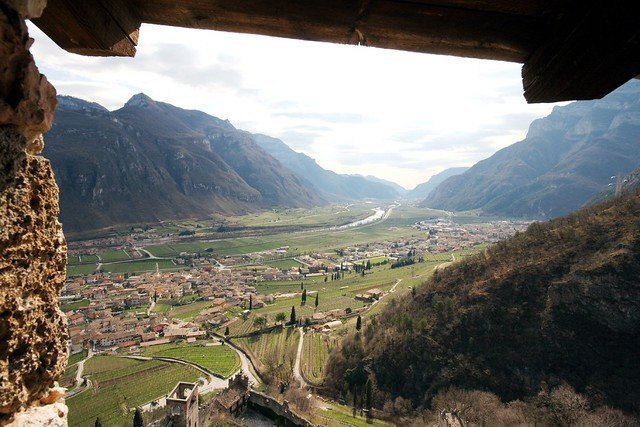 Avio
Avio
Avio is a small town of just over 4000 inhabitants located in the Rovereto area, part of the Vallagarina and crossed by the Adige river.
The town of Avio is located on the eastern ridge of Monte Baldo, and the mountain locality not only favors tourism to the numerous mountain huts present, but also the production of fine native wines such as the famous Enantio. It is also particularly popular for walks in the historic center, made up of numerous ups and downs.
The Castello di Avio, in the hamlet of Sabbionara, is undoubtedly the main attraction of the city, as well as one of the most popular monuments in the whole of Trentino.
THE CASTLE:
For over ten centuries the structure has stood imperiously in Vallagarina, controlling one of the most used passages between peninsular Italy and the rest of Europe.
Built in its basic structure already in the 11th century, the palace was subsequently enlarged with five towers and 13th-century walls by the very important Castelbarco family, who later left it as an inheritance to the new Venetian conquerors.
Currently the castle is owned by the Fondo per l’Ambiente Italiano and can be visited from March to October.
OTHER ATTRACTIONS:
Another famous monument of Avio is the ancient Pieve, built between the 8th and 10th centuries, and rich in 12th century frescoes by anonymous Veronese masters.
The painting of the apse by Gian Maria Falconetto dates back to the fifteenth century, as well as the Sibyls in the side aisle attributable to Paolo Farinati and the bas-relief sculpted by Guglielmo Emanuelli.
You can also visit: the church of San Vigilio (or Sabbionara), the church of San Carlo,
HISTORY:
The town has a long and intense history.
The famous and powerful Castelbarco family in fact originated in this place, and it was in 1198 that they were invested with the dominion of the nearby castle. After several centuries of uninterrupted sovereignty, the vicariate of Avio (together with that of Ala) was however ceded to the Republic of Venice. This event was generally considered positive by both historical parts: if Venice needed a foothold to expand towards continental Europe, the locals were finally able to enjoy a fair amount of autonomy and great economic prosperity. A real golden age for the country.